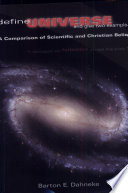 Every body continues in its state of rest or of uniform motion in a straight line, unless it is compelled to change that state by forces impressed upon it. Every body continues in its state of rest or of uniform motion in a straight line, unless it is compelled to change that state by forces impressed upon it.  Elements of Physics - Page 36by Fernando Sanford - 1902 - 426 pagesFull view Elements of Physics - Page 36by Fernando Sanford - 1902 - 426 pagesFull view - About this book
 | Hasan S. Padamsee - 2002 - 708 pages
...what physicist's proudly call Newton's First Law of Motion: 559 A body remains in its state of rest or uniform motion in a straight line, unless it is compelled to change that state by an outside force acting on the body. Without friction, without interaction with the earth, or any other... | |
 | Scott Barrie - 2003 - 356 pages
...state Newton's First Law of Motion: "Every body continues in its state of rest or of uniform speed in a straight line unless it is compelled to change that state by a net force acting on it." In lay terms, "an object in motion will continue in motion." Since most... | |
 | João Alexandre Leite - 2003 - 332 pages
...known as the law of inertia, states that: "everg hodg remains at rest or moves with constant velocitg in a straight line. unless it is compelled to change that state hg an unhalanced force acting upon it" (adapted from [174]). Commonsense often tends to interpret this... | |
 | Gale E. Christianson - 2005 - 160 pages
...that most concerns us. According to Newton's first law, "Every body continues in its state of rest, or of uniform motion in a straight line, unless it is compelled to change that state by forces impressed upon it." As we have seen, Galileo was actually the first to formulate this principle.... | |
 | Gary MacDougal - 2005 - 368 pages
...Really in Charge Here? The Clout of Unions and Providers Every body continues in its state of rest, or of uniform motion in a straight line, unless it is compelled to change that state by forces impressed upon it. — SIR ISAAC NEWTON rwas having a bratwurst and sauerkraut lunch with Jimmy... | |
 | Keith Burns, Marian Gidea - 2005 - 408 pages
...thought of as an analogue of Newton's First Law of Motion (every body continues in its state of rest, or of uniform motion in a straight line, unless it is compelled to change that state by forces impressed upon it). We can rewrite the equation (4.4.1) with respect to a local coordinate system... | |
 | R.K. Bansal - 2005 - 688 pages
...First and Second Laws of Motion. Newton's first law states, "Every body continues in a state of rest or uniform motion in a straight line unless it is compelled to change that state by some external force acting on it." Newton's second law states, "The net external force acting on a... | |
 | Bruce K. Donaldson - 2006 - 566 pages
...can be paraphrased as (Ref. [1.1]): 1. Every particle continues in its state of rest or in its state of uniform motion in a straight line unless it is compelled to change that state by forces impressed upon it. 2. The time rate of change of momentum is proportional to the impressed force,... | |
 | Barton E. Dahneke - 2006 - 692 pages
...law states (upon translation from Latin to English): "Every body continues in its state of rest, or of uniform motion in a straight line, unless it is compelled to change that state by forces impressed on it." By this first law a force is required to set a body in motion or to change... | |
 | Joseph Hamill, Kathleen M. Knutzen - 2006 - 486 pages
...translation of Newton's Principia (13). LAW I: LAW OF INERTIA Every body continues in its state of rest, or of uniform motion in a straight line, unless it is compelled to change that state by forces impressed on it (13). The inertia of an object is used to describe its resistance to motion.... | |
| |